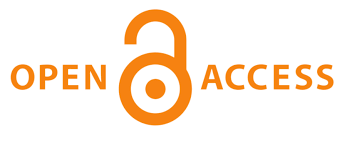Transparansi Partai Politik dalam Rekrutmen Calon Legislatif
 ), Claudio Patrick I Rahakbauw(2)
), Claudio Patrick I Rahakbauw(2)
(1) Fakultas Hukum Universitas Pattimura, Ambon, Indonesia, Indonesia
(2) Program Strata Satu Ilmu Hukum Fakultas Hukum Universitas Pattimura, Indonesia
 Corresponding Author
Corresponding Author
Abstract
Keywords
DOI
10.47268/sasi.v26i1.261
Published
2020-05-19
How To Cite
@article{SASI261,
author = {Reny Nendissa and Claudio Rahakbauw},
title = {Transparansi Partai Politik dalam Rekrutmen Calon Legislatif},
journal = {SASI},
volume = {26},
number = {1},
year = {2020},
keywords = {Transparency; Recruitment; Legislative Candidates},
abstract = {The development of democracy, the role and function of political lebih parties is more complete. This is due to the large expectations that are developing, so the function and role of the party will increase. However, the pattern of recruitment of candidates who do not consider the requirements to gain the votes of political parties. Based on the aforementioned background, the problem to be studied is the regulating the recruitment patterns of legislative candidates by political parties. The research method used in this discussion is normative juridical research using a research proposal-law (statute approach) and accessing concepts (conceptual approach). there is a legislative candidate who can be moved freely to another party and only joins when he will be nominated as a candidate by setting aside the old conditions as cadres approved by the party. Through this agreement, it was agreed that political parties could be emphasized by the principle of their parties to select candidates through clear and transparent recruitment patterns},
issn = {2614-2961}, pages = {119--127} doi = {10.47268/sasi.v26i1.261},
url = {https://fhukum.unpatti.ac.id/jurnal/sasi/article/view/261}
}
Buku
[1] Dhakidae, Daniel. (1999). Partai-Partai Politik Indonesia: Ideologi, Strategi, dan Program,Jakarta: Kompas.
[2] Gatara, Sahid. (2000). Sosiologi Politik: Konsep dan Dinamika Perkembangan Kajian, Bandung: Pusaka Setia.
[3] Gafar, Janedri M. (2013). Demokrasi dan Pemilu di Indonesia, Jakarta: Konstitusi Press.
[4] Harris, Syamsuddin. (2005), Pemilu Langsung Di Tengah Oligarki Partai, Jakarta: Gramedia Pustaka.
[5] Hasibuan, Melayu S.P. (2006). Manajemen, Dasar, Pengertian Dan Masalah, Jakarta: Bumi Aksara.
[6] Mufti, Muslim. (2012). Teori - Teori Politik, Bandung: Pustaka Setia.
[7] Putra, Fadillah. (2007). Partai Politik dan Kebijakan Publik, Yogyakarta: Pusataka Belajar.
[8] Romli, Lily. (2005). Pemilihan Presiden Langsung 2004 dan Konsolidasi Demokrasi Di Indonesia, Jakarta: LIPI.
[9] Surbakti, Ramlan. (1998). Memahami Ilmu Politik, Jakarta: Gramedia.
[10] Surbakti, Ramlan. (2004). Memahami Ilmu Politik dalam Koirudin. Partai Politik dan Agenda Transisi Demokrasi, Yogyakarta: Pustaka Pelajar.
Jurnal dan Lain-Lain
https://news.detik.com/kolom/d-4120676/rekrutmen-caleg-antara-pesohor-dan-kutu-loncat| Dublin Core | PKP Metadata Items | Metadata for this Document | |
| 1. | Title | Title of document | Transparansi Partai Politik dalam Rekrutmen Calon Legislatif |
| 2. | Creator | Author's name, affiliation, country | Reny Heronia Nendissa; Fakultas Hukum Universitas Pattimura, Ambon, Indonesia; Indonesia |
| 2. | Creator | Author's name, affiliation, country | Claudio Patrick I Rahakbauw; Program Strata Satu Ilmu Hukum Fakultas Hukum Universitas Pattimura; Indonesia |
| 3. | Subject | Discipline(s) | |
| 3. | Subject | Keyword(s) | Transparency; Recruitment; Legislative Candidates |
| 4. | Description | Abstract | The development of democracy, the role and function of political lebih parties is more complete. This is due to the large expectations that are developing, so the function and role of the party will increase. However, the pattern of recruitment of candidates who do not consider the requirements to gain the votes of political parties. Based on the aforementioned background, the problem to be studied is the regulating the recruitment patterns of legislative candidates by political parties. The research method used in this discussion is normative juridical research using a research proposal-law (statute approach) and accessing concepts (conceptual approach). there is a legislative candidate who can be moved freely to another party and only joins when he will be nominated as a candidate by setting aside the old conditions as cadres approved by the party. Through this agreement, it was agreed that political parties could be emphasized by the principle of their parties to select candidates through clear and transparent recruitment patterns |
| 5. | Publisher | Organizing agency, location | Faculty of Law, Universitas Pattimura |
| 6. | Contributor | Sponsor(s) | |
| 7. | Date | (YYYY-MM-DD) | 2020-05-19 |
| 8. | Type | Status & genre | Peer-reviewed Article |
| 8. | Type | Type | |
| 9. | Format | File format | PDF (Bahasa Indonesia) |
| 10. | Identifier | Uniform Resource Identifier | https://fhukum.unpatti.ac.id/jurnal/sasi/article/view/261 |
| 10. | Identifier | Digital Object Identifier | 10.47268/sasi.v26i1.261 |
| 11. | Source | Title; vol., no. (year) | SASI; Vol 26, No 1 (2020): Volume 26 Nomor 1, Januari - Maret 2020 |
| 12. | Language | English=en | id |
| 13. | Relation | Supp. Files |
Untitled (278KB) |
| 14. | Coverage | Geo-spatial location, chronological period, research sample (gender, age, etc.) | |
| 15. | Rights | Copyright and permissions | Copyright: Authors who publish their manuscripts in this Journal agree to the following conditions: 1. The copyright in each article belongs to the author, as well as the right to patent. 2. Authors can enter into separate, additional contractual arrangements for the non-exclusive distribution of the journal's published version of the work (e.g., post it to an institutional repository or publish it in a book), with an acknowledgment of its initial publication in this journal. 3. Authors are permitted and encouraged to post their work online (e.g., in institutional repositories or on their website) before and during the submission process, as it can lead to productive exchanges, as well as earlier and greater citation of published work. 4. Authors have the right to self-archiving of the article (Author Self-Archiving Policy)
License: The SASI Journal is disseminated based on the Creative Commons Attribution-NonCommercial 4.0 International license terms. This license allows anyone to copy and redistribute this material in any form or format, compose, modify, and make derivatives of this material for any purpose. You cannot use this material for commercial purposes. You must specify an appropriate name, include a link to the license, and certify that any changes have been made. You can do this in a way that is appropriate but does not imply that the licensor supports you or your use.
|
Copyright (c) 2020 Reny Heronia Nendissa, Claudio Patrick I Rahakbauw

This work is licensed under a Creative Commons Attribution-NonCommercial 4.0 International License.

 : 5348 times
: 5348 times Download : 2542 times
Download : 2542 times
















